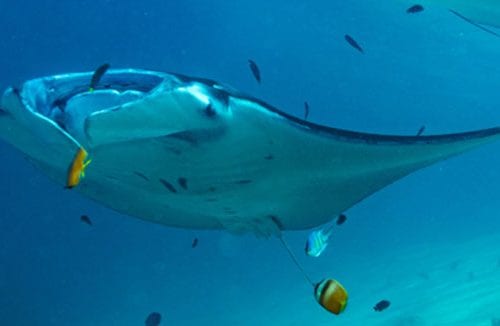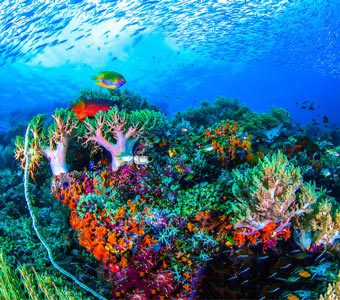As I board my first ever Great Barrier Reef liveaboard trip, diving the Coral Sea with Mike Ball Dive Expeditions, I’m told conditions have never been better. Calm seas, blue skies and hardly a breath of wind. On this 4-night Coral Sea trip, conditions are so good, in fact, we’re able to dive remote Holmes Reef and Bougainville Reef as well as Osprey Reef.
We steam overnight to Holmes Reef, and after a good night’s sleep, I wake up to an expanse of blue. A quick briefing and we’re in the water. Nonki Bommie is a large coral bommie (or pinnacle) that drops down to 40 metres, covered in soft and hard corals and enormous gorgonian fans.
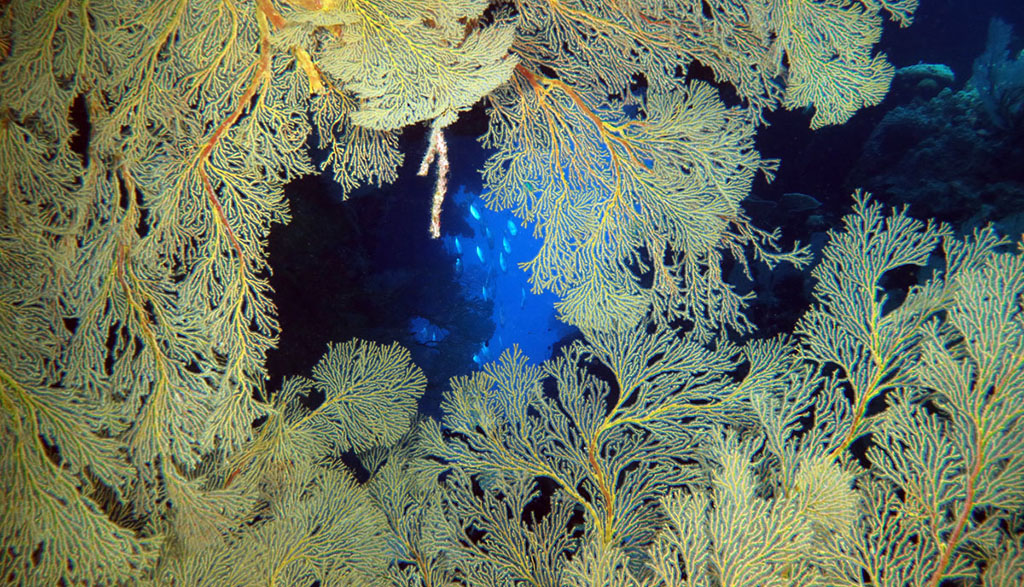
In the middle of the pinnacle, there’s a slot, its entrance framed by a large yellow sea fan, one of the largest I’ve ever seen. My buddy and I spend about 10 minutes here before continuing on around the reef wall, but we keep returning to this beautiful slot, approaching it from different directions and swimming through from the opposite side of the pinnacle.
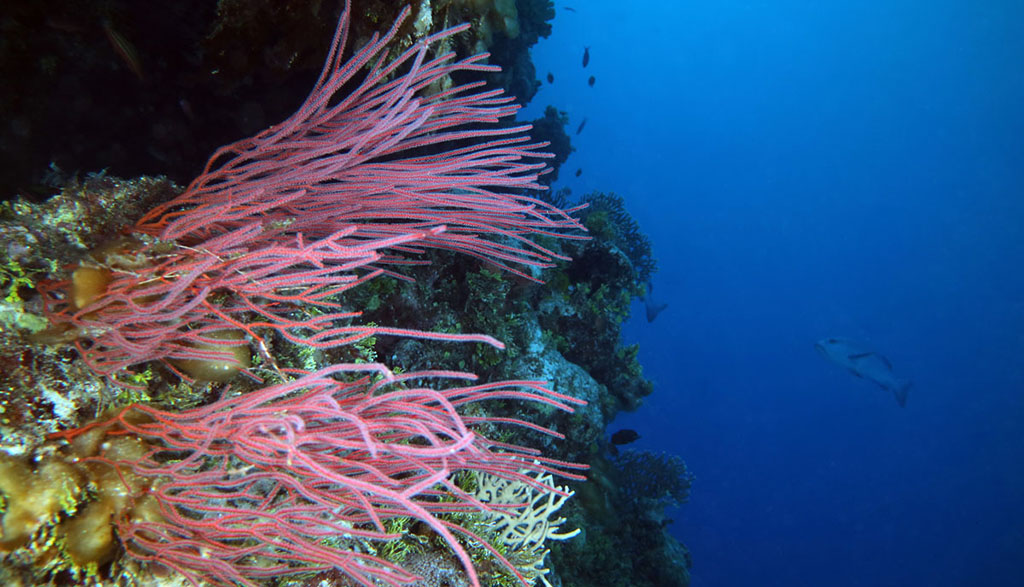
Along its length, the slot is adorned with yellow fans, red, white, pink and blue soft corals, bright red whip coral, with yellow damsels and purple basslets adding even more colour to this coral kaleidoscope. Parrot fish, wrasse and surgeon fish graze along the top of the reef and overhead, large schools of Jacks patrol the pinnacle, rushing past in formation, glinting in the sunlight.
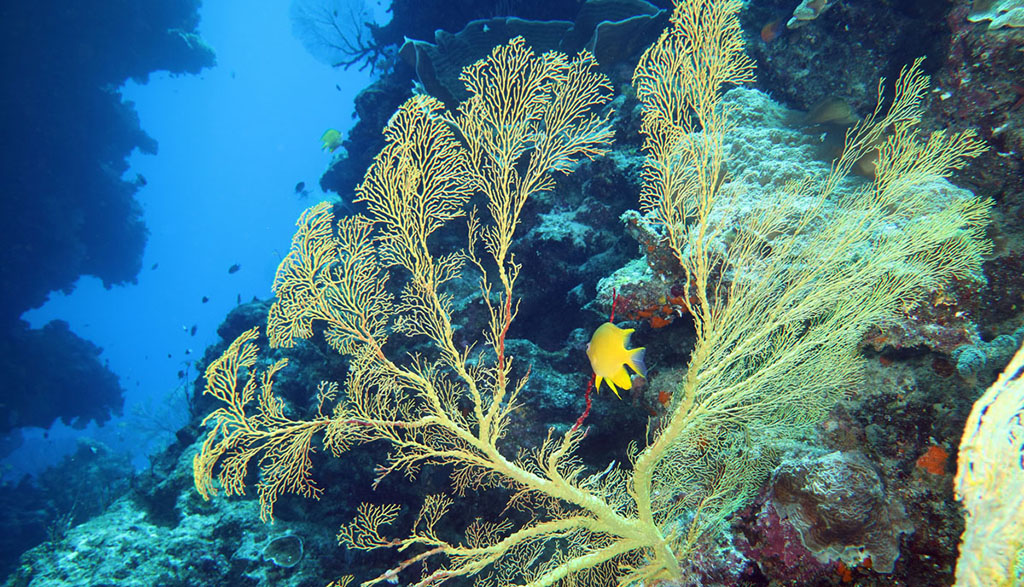
On our second dive we head to a smaller bommie nearby, adorned with a sea fan so large I can’t fit it in frame as I try to photograph it. Schools of yellow striped snapper arc over the huge fan and its soft coral adornments, while sweetlips and coral trout hover by feather stars waiting to be cleaned.
Our first morning underwater is going well so far.
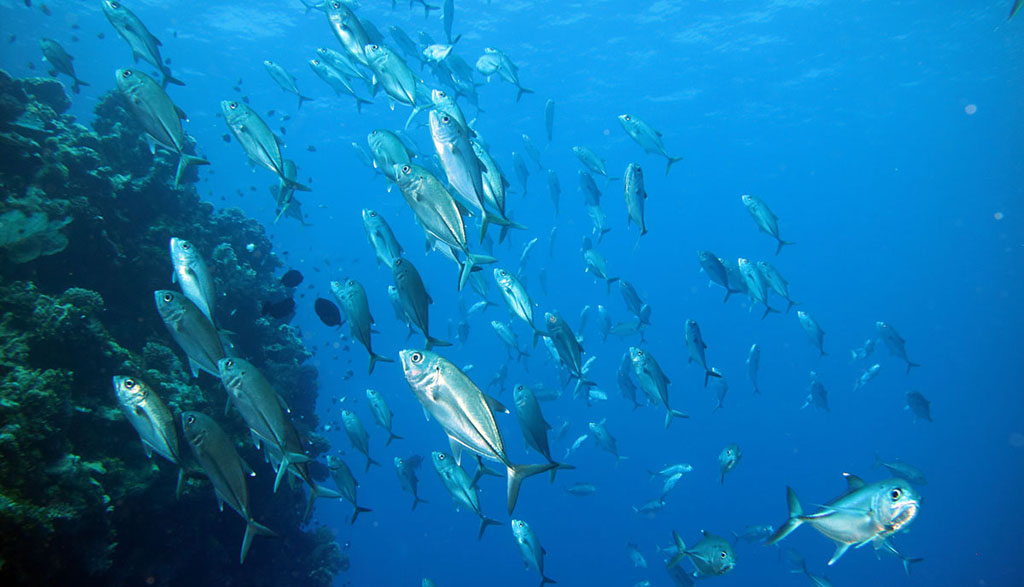
We cruise along the reef while lunch is served to a site called simply; ‘Amazing’. It could be called so because of the labyrinthine caverns and swim-throughs at this site, or because that’s how divers describe the dive as they emerge afterwards.
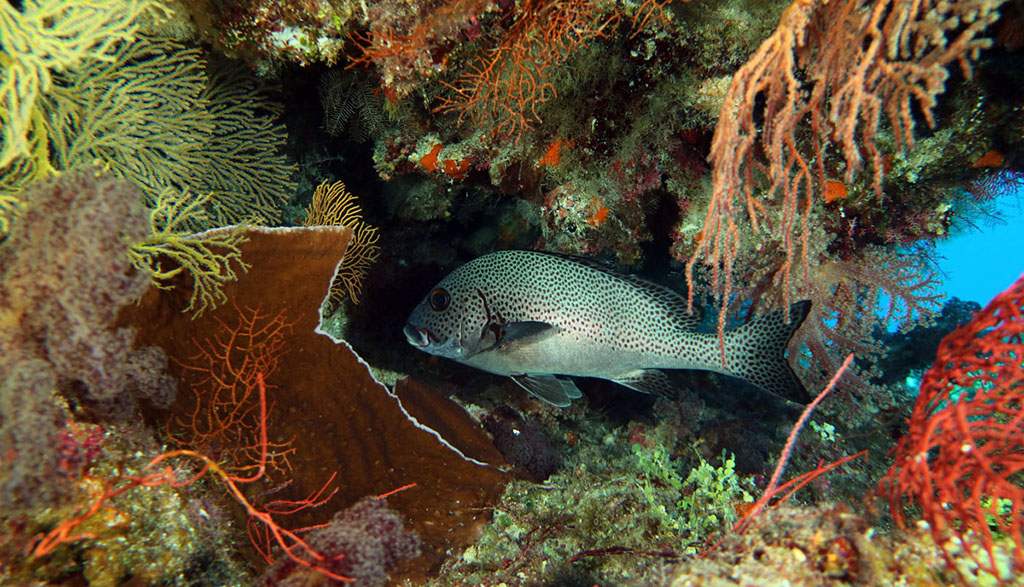
We swim along a sandy bottom towards the reef, passing a few black tip reef sharks and a grey reef shark along the way before exploring the small coral bommies that lead to the start of this underwater maze.
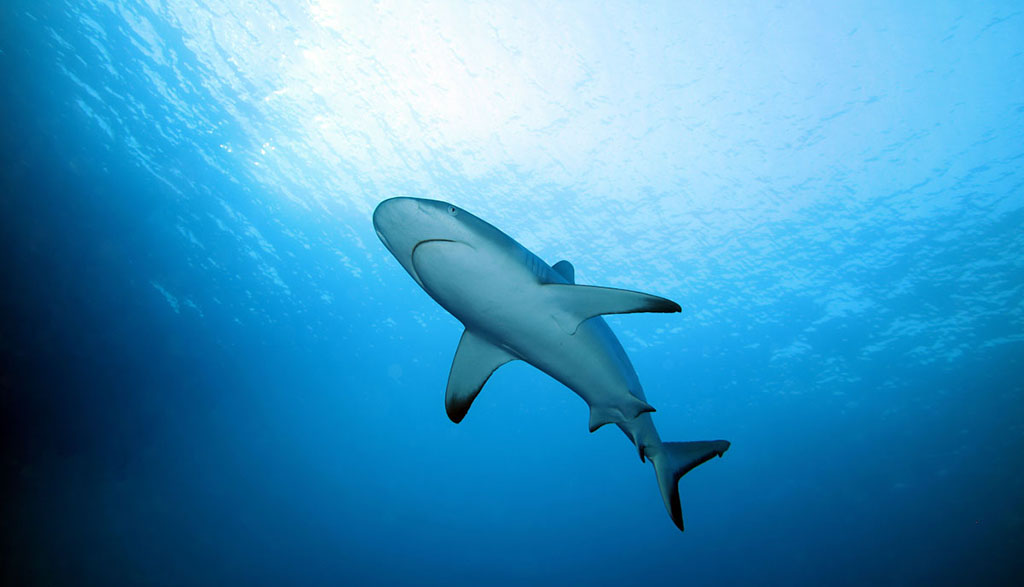
Looking closer at the sandy bottom we see hundreds of garden eels swaying in the gentle current and on the bommies, purple basslets hover in front of brightly coloured fans and whip corals, while cardinal fish hide behind.

Everywhere we look, the reef is alive with colour and movement. So… what’s all this about the Reef dying?
There’s no doubt the Reef is under threat, climate change bringing with it storms of increasing intensity and warmer waters causing increasingly frequent coral bleaching events. But this Reef gives me hope.
After diving Holmes Reef, I’m told that this same reef suffered several bleaching events and cyclone damage in recent years. A quick Google search and I find reports of bleaching events in 2002, 2006 and as recently as 2016, the ARC Centre of Excellence for Coral Reef Studies survey reports:
“At Holmes Reef, the most northern of the reefs surveyed, almost 80% of corals show some sign of bleaching, and of those 40% were fully bleached and 25% dead.”
To see so much life on a reef that, only a couple of years ago, you’d be forgiven for writing off, is heart-lifting to say the least.
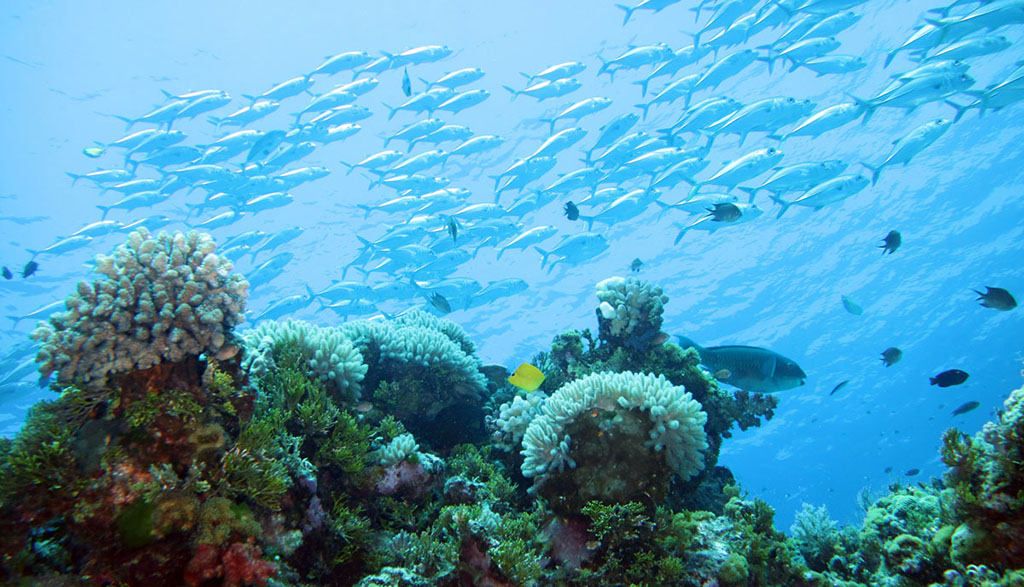
It really is not too late to save the Great Barrier Reef.
It’s not too late to save ALL the world’s coral reefs – because they are all under threat. The media focus on the Great Barrier Reef’s demise is a reflection of how well known and well-loved this reef is globally.
According to Dr David Wachenfeld, chief scientist, Great Barrier Reef Marine Park Authority (GBRMPA); “We’ve got the most famous reef in the world.”
Dr Wachenfeld was speaking on a panel at the recent Australian Society of Travel Writers convention held in Cairns, along with Quicksilver Cruises Master Reef Guide; Dr Glen Burns and Wendy Morris, Chair of Tourism Tropical North Queensland (TTNQ).
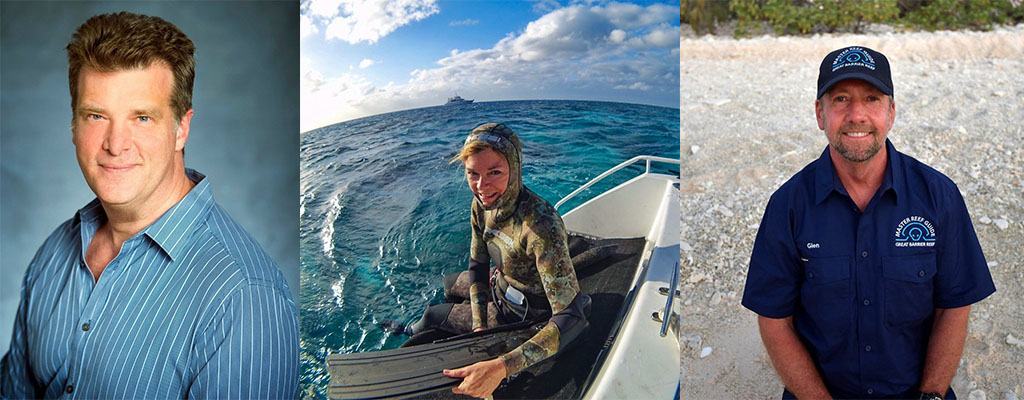
The panel did its best to explain the threats faced by the Great Barrier Reef, while outlining the strategies in place to save it and how everyone, media included, can contribute.
“It’s time to toughen up and do what we can to save the Reef – these are challenges we need to lean into – and collaboration is the new innovation,” he said.
And tourism helps. A number of new citizen science-driven projects invite visitors to contribute data such as the Eye on the Reef app which allows snorkelers and divers to share sightings, photographs and short video recordings with scientists. The recently-launched Master Reef Guides program helps educate visitors on the intricacies of the world’s largest living organism on every guided tour. Other programs, such as Citizens of the Great Barrier Reef, show people around the globe what they can do at home to help save the Reef. Citizens also shares live updates of the many research programs currently in progress with its amazing Citizens Atlas.
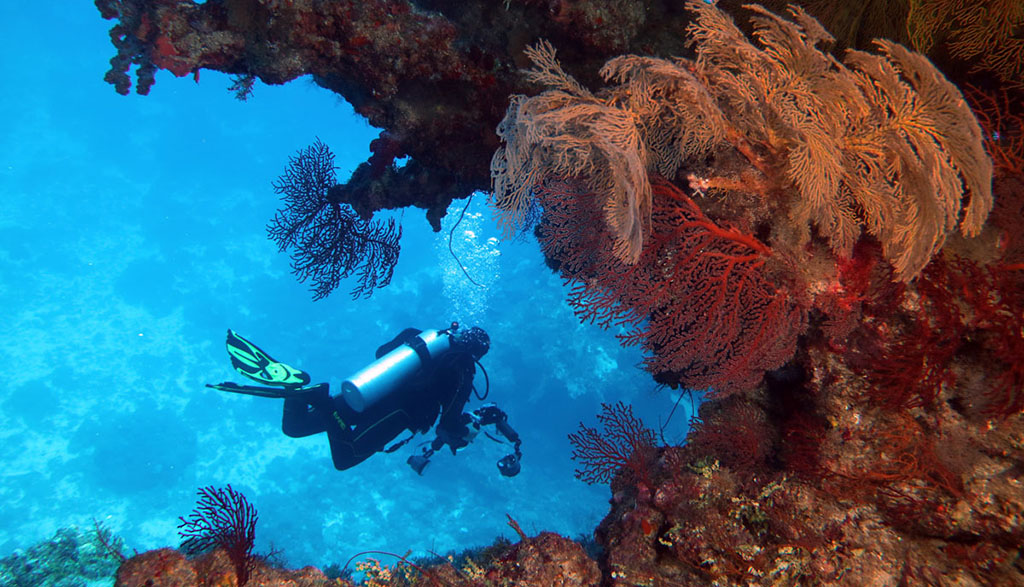
In fact, according to TTNQ Chair Wendy Morris, “tourism is driving Reef knowledge, you are contributing simply by visiting”. A percentage of every dollar spent by visitors to the Reef goes towards the Reef’s protection and ongoing research.
When questioned if the Reef was affected by ‘over-tourism’, Dr Burns informed media that, compared to international definitions; “even the Great Barrier Reef’s most intensively used areas are not ‘intensively used’ by global standards.”
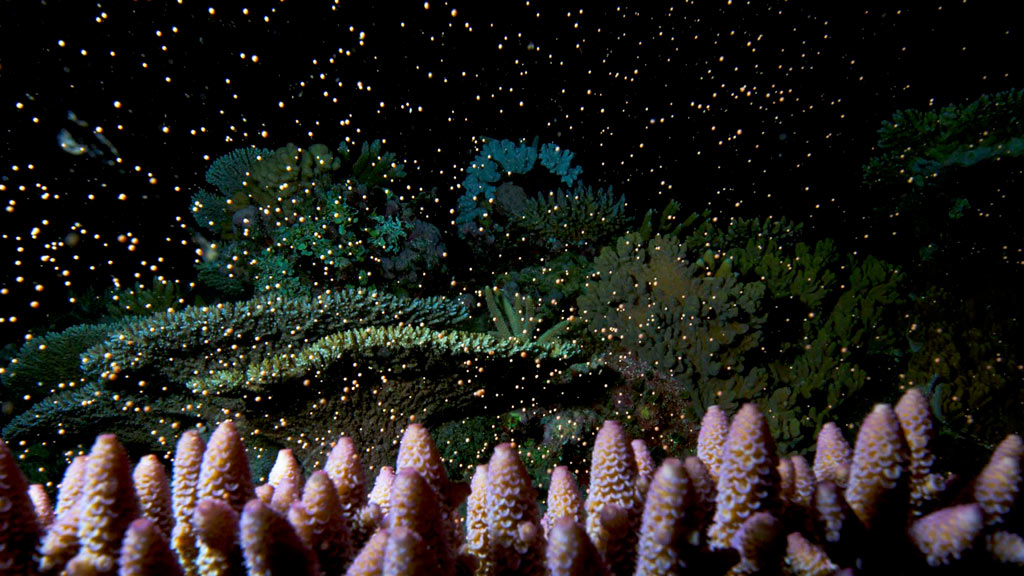
Next month is a big month for the Great Barrier Reef, the annual coral spawning event is predicted to happen under a full moon, on the 18th of November.
It’s proof of life. Scientists and media from all over the world have been invited to witness this momentous event and learn about the many and myriad programs in place to protect and preserve the Reef.
If you’d like to visit the Great Barrier Reef and see for yourself, I highly recommend a three, four or 7-night trip with Mike Ball Dive Expeditions.
And stay tuned to the Diveplanit blog for more information on this year’s Great Barrier Reef Coral Spawning Event.

